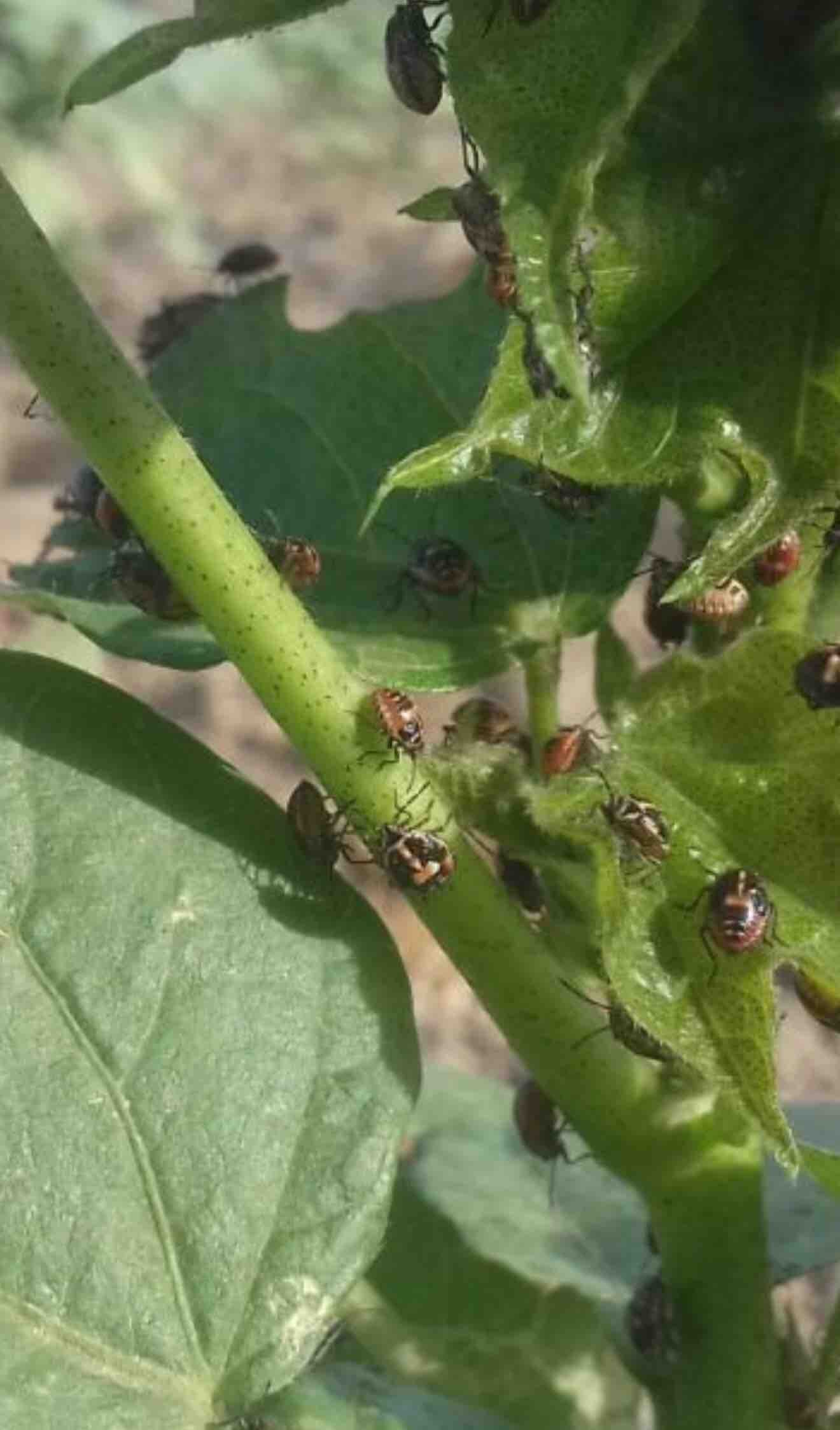Bug menyengat
Peach, apple, nectarine, pear, tomato, soy, peach, apricot cherry, raspberry, wheat, pecan, cotton, pea, rice, alfalfa, and corn
Stink bugs (pentatomids) were given their name due to the malodor they secrete as a defense mechanism when injured or in the presence of humans. The Pentatomidae family contains tens of genera that have hundreds of different species from which only several are considered significant pests: brown marmorated stink bug (Halyomorpha halys), green stink bug (Nezara viridula and Acrosternum hilare), rice stink bug (Oebalus pugnax pugnax), brown stink bug (Euschistus servus), and one spotted stink bug (Euschistus variolarius).
Stink bugs are agricultural pests capable of rapidly reproducing; females can lay up to 400 eggs during their lifespan. Stink bugs cause significant damage to fruit and vegetable crops. Stink bug infestations are likely to cause an overall reduction of yields. Damage is inflicted when stink bugs feed on plant parts, especially on fruits which can lead to poor quality fruits that are unfit for the market. One of the main symptoms is scarring of fruit peels from necrotic zones. Important fact: stink bugs can feed and survive on uncultivated plants and weeds.
Tanaman atau bibit yang tahan terhadap penyakit merupakan syarat penting dalam budidaya.
Jaringan dalam tanaman, jaringan tanaman harus tertutup dan hindarkan luka atau lubang pada bagian tanaman.
Produk yang digunakan oleh satu atau sebagian dari dunia adalah mengandung bahan aktif sebagai berikut:
lambda cyhalothrin, bifenthrin, cypermethrin, zeta-cypermethrin, dan methomyl.
*Names marked in red are considered to be highly poisonous to beneficial insects.
*Names marked in green are considered to be organic and IPM (integrated pest management) compatible.
Image Gallery
